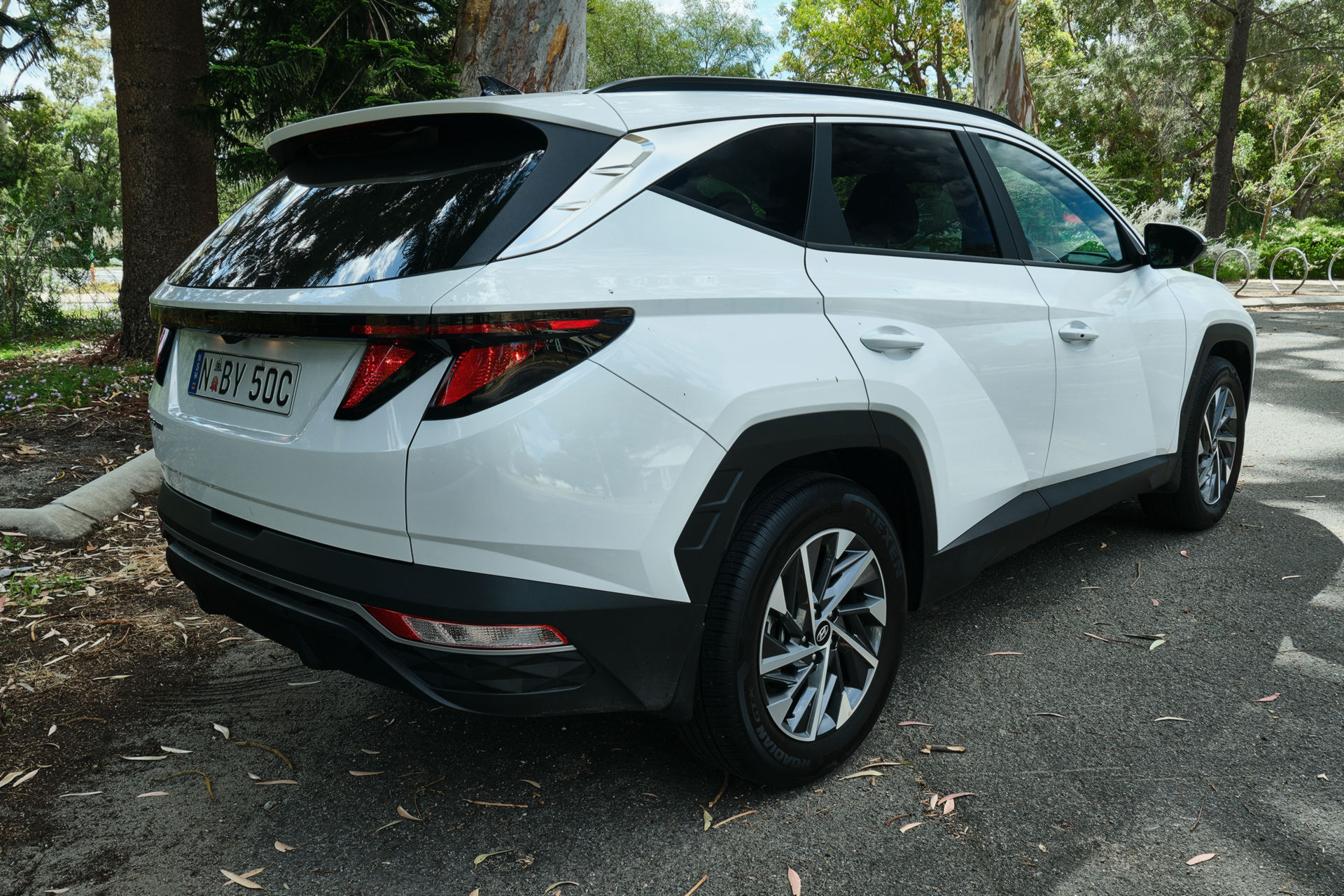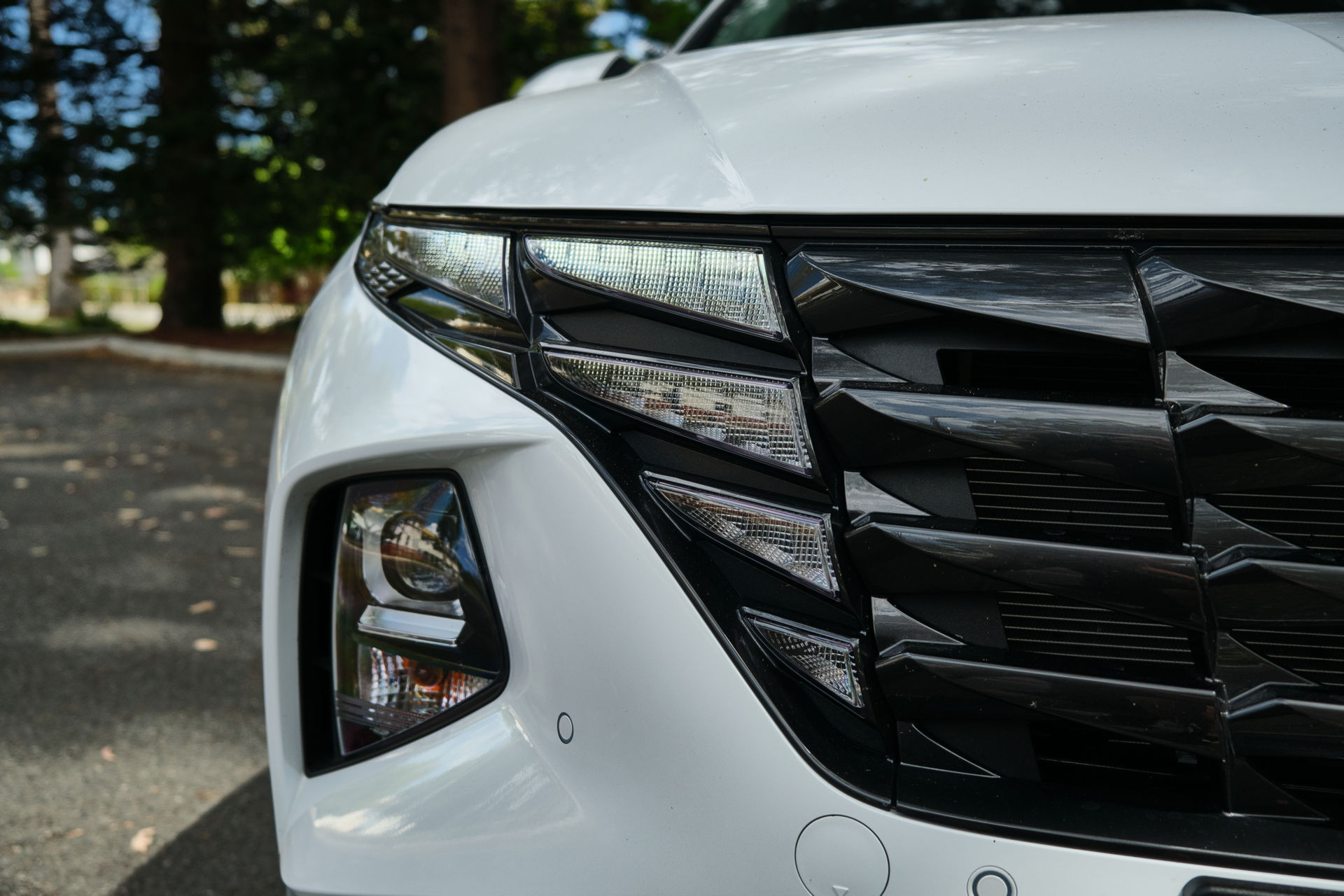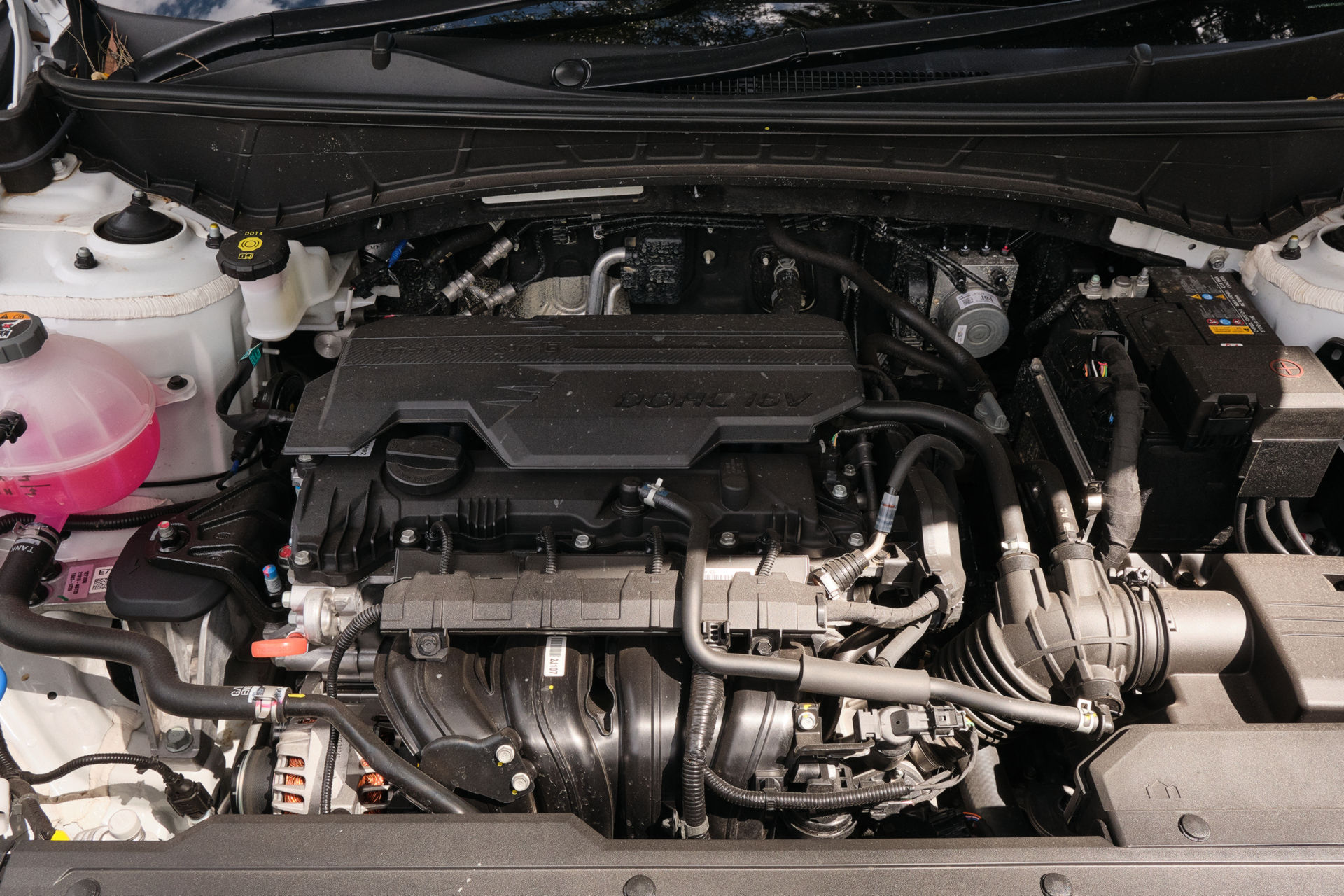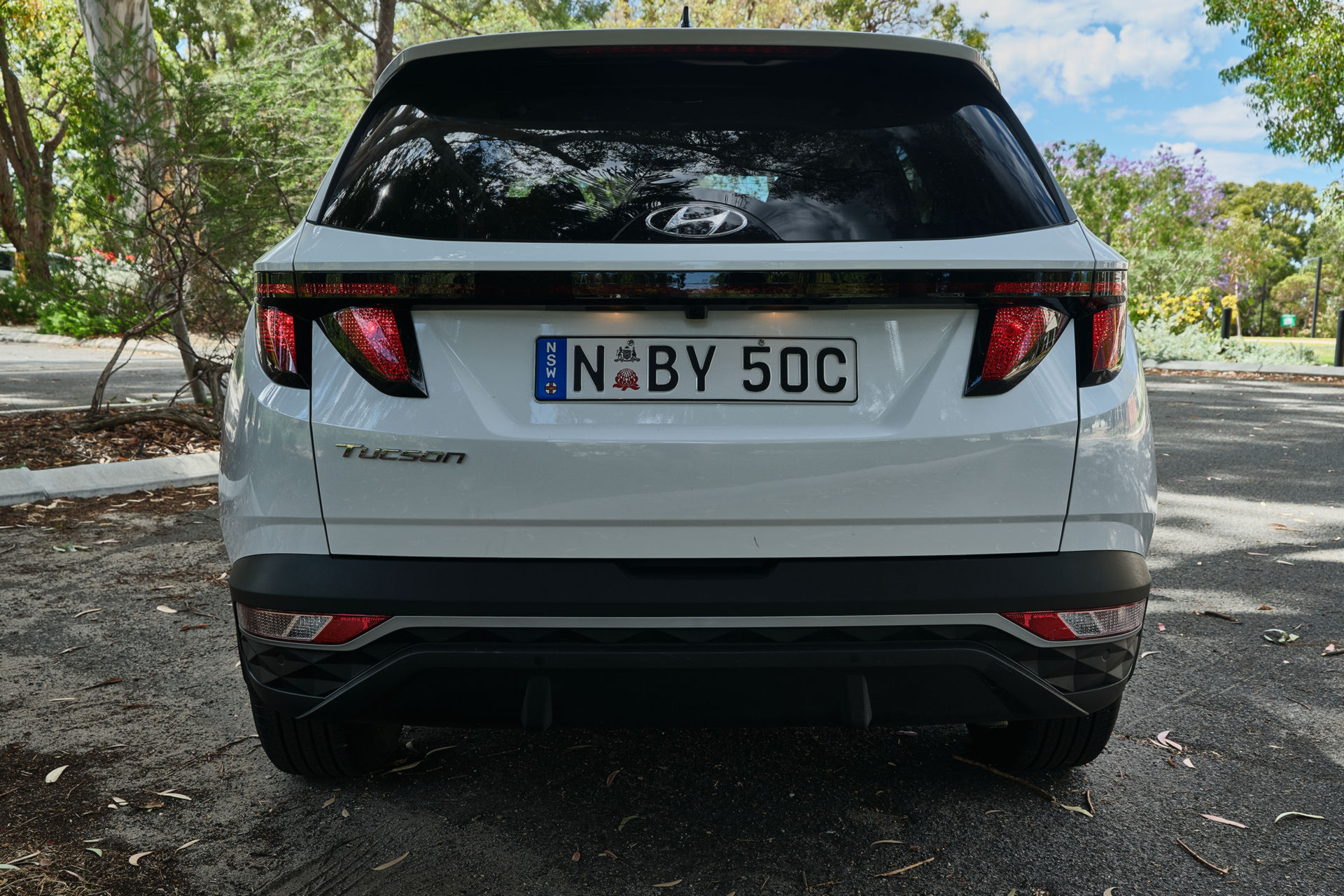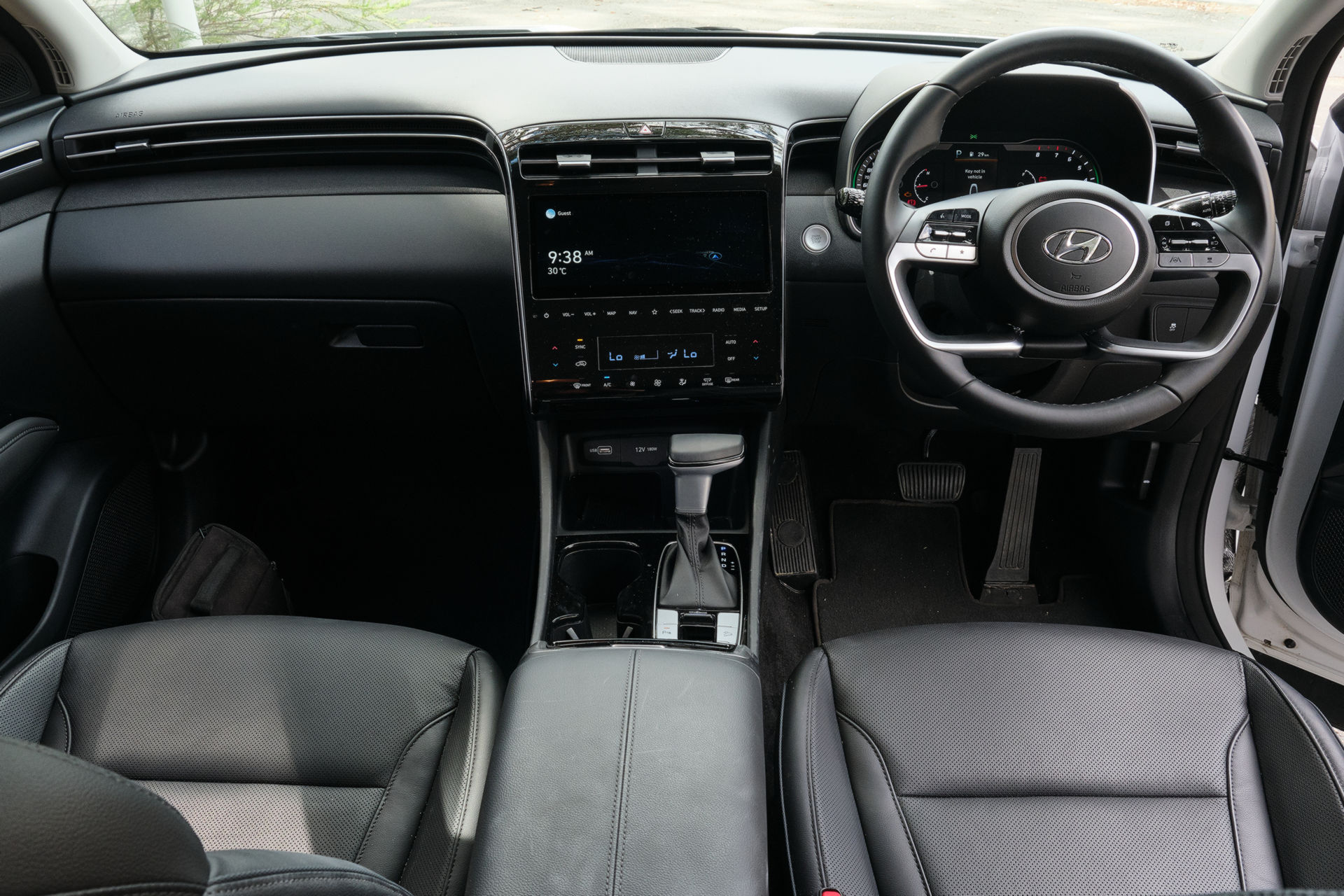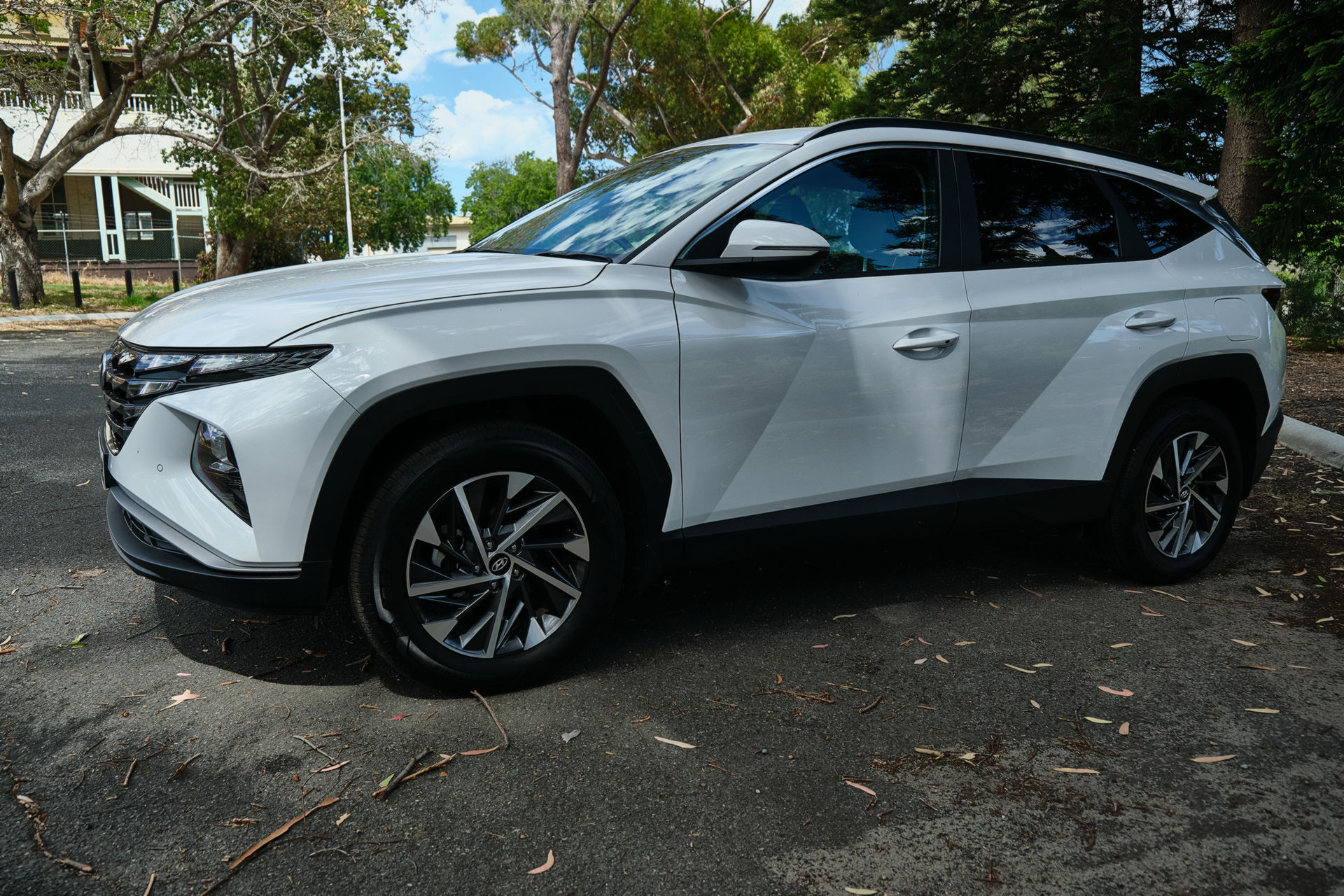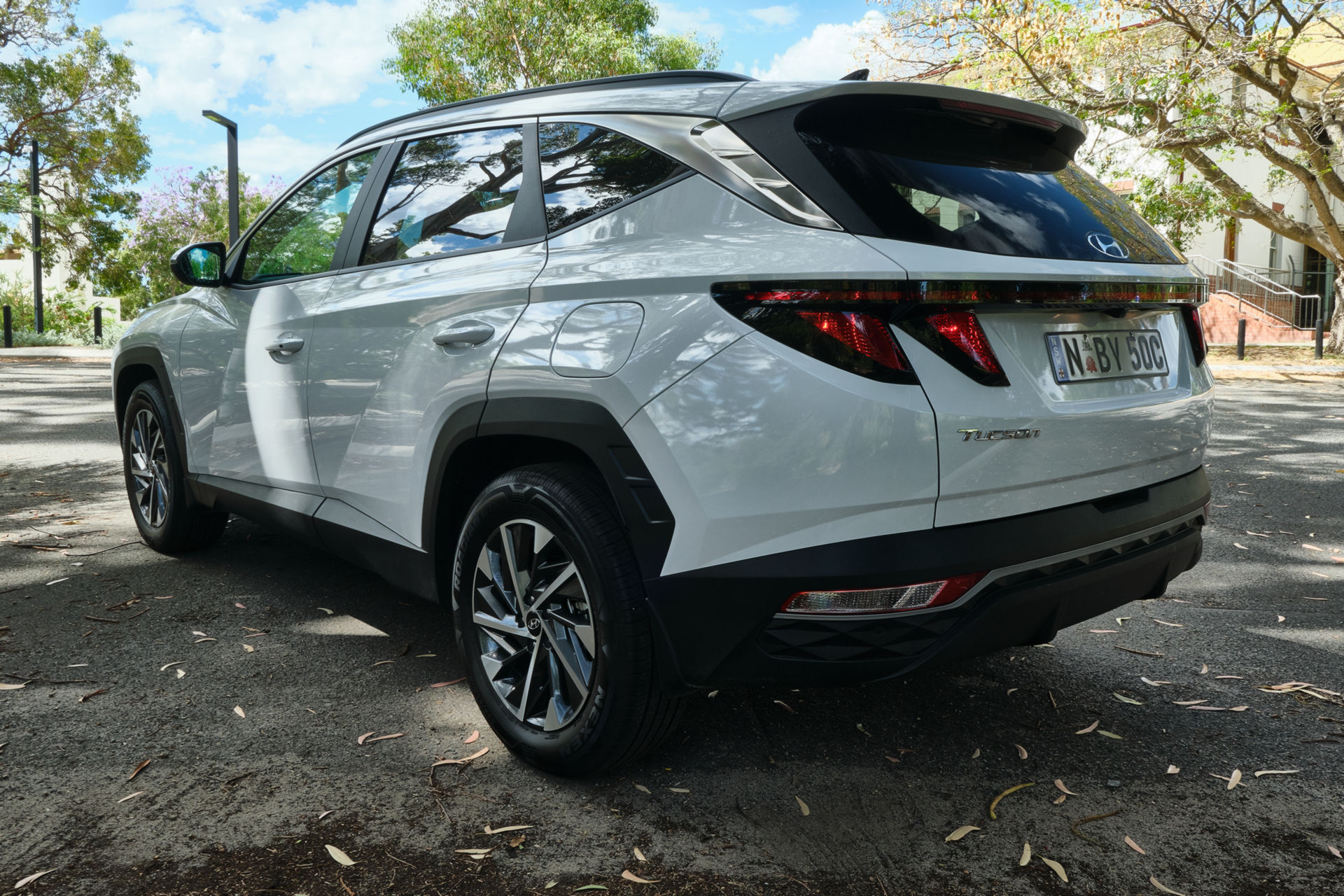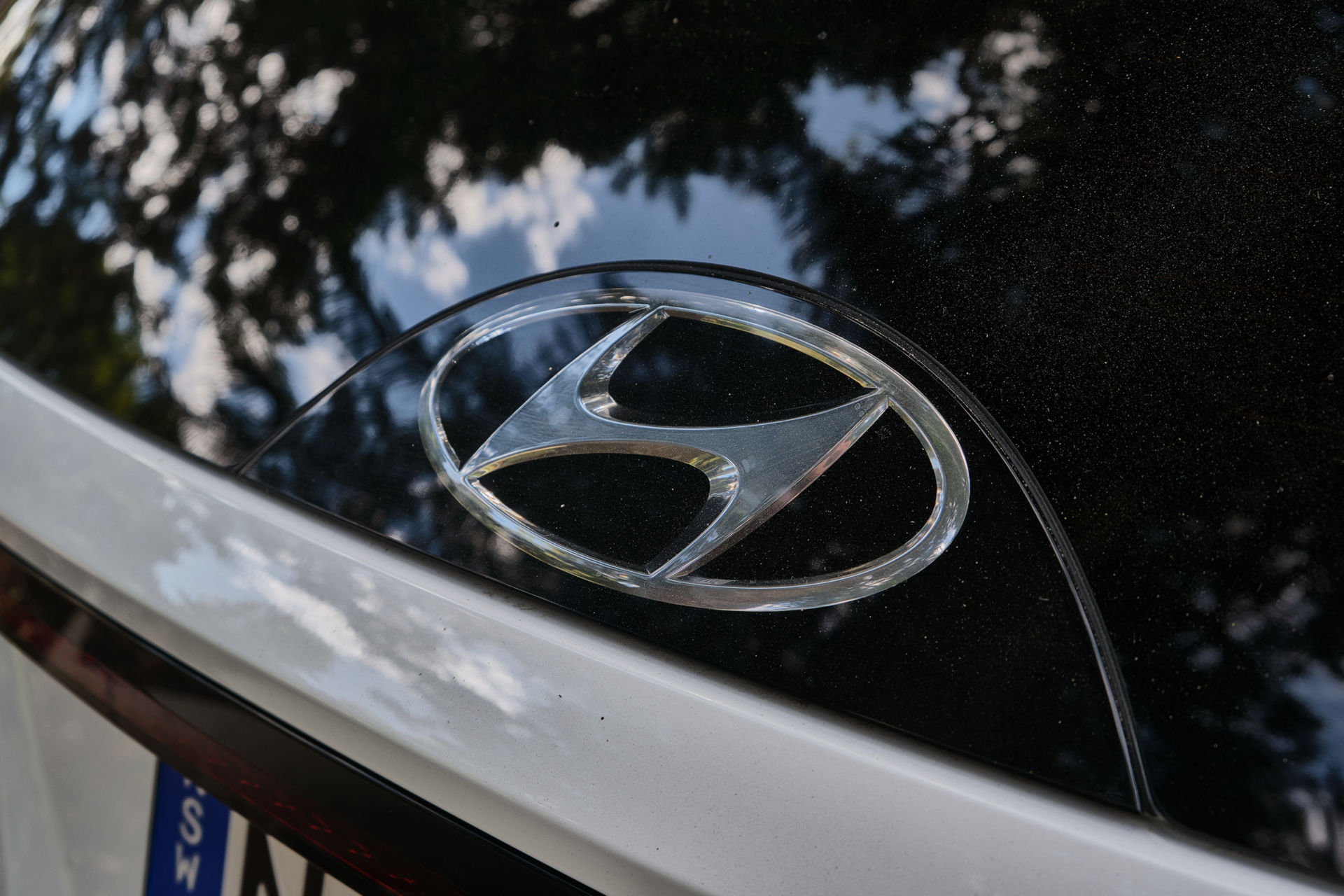One could have excused Hyundai for playing it safe with the fourth-generation Tucson. After all, it is one of the brand’s most popular models and, usually, one does not mess with a successful recipe. Despite this, Hyundai did very much the opposite with the new Tucson, making it stand out on the road with striking exterior and interior looks.
The South Korean car manufacturer introduced its new ‘jewel-like’ grille with the 2021 Tucson, a feature that has since been adopted with the Santa Cruz pickup truck and could be used by the facelifted Palisade. This is much more than a typical grille, however, and cleverly hides the LED daytime running lights into the grille itself, resulting in a truly radical design.
Like some other Hyundai models, the new Tucson sports a split headlight design and the bold looks stretch down the sides. Whereas some car manufacturers are introducing new vehicles with very few body lines and creases, the fourth-generation Tucson goes in the opposite direction and has sharp creases and angles across the doors, wheel arches, and rocker panels. One could argue that the sides of the Tucson have been over-styled but when finished in a light shade such as white, these lines do become less prominent. The bold looks continue at the rear with silver trimmings on the D-pillars, a rooftop spoiler, pointed LED taillights and a full-width light bar.
There’s no denying that the new Tucson stands out, so much so that we were taken aback when we first laid eyes on our tester. Hyundai is boring no more.
Read Also: A Hyundai Tucson Doesn’t Need A Widebody Kit But It Could Look Pretty Awesome With One
Underpinning the new Tucson, tested here in 2022 Elite specification, is the same N3 platform used by the likes of the Santa Fe, Staria and Santa Cruz, and vehicles from Kia including the Carnival, Sorento, and Sportage. Most markets around the world are offered the new Tucson exclusively in ‘long-wheelbase’ guise, while Europe and Mexico get a special, ‘short wheelbase’ variant.
Vehicles sold in Australia are 4,630 mm (182 inches) tall, 1,865 mm (73.4 inches) wide, and stand 1,665 mm (65.5 inches) tall with a 2,755 mm (108.4 inch) wheelbase. The previous-generation Tucson wasn’t lacking in space but the wheelbase of this new model is 85 mm (3.3 inches) longer, making it even more spacious.
Loads of powertrains and trim levels on offer
Aussie customers are offered the 2022 Tucson in three main versions: the entry-level variant, the mid-range Elite, and the flagship Highlander. An N Line option package is also available with all three variants and adds a different bodykit, 19-inch N alloy wheels, an N Line gloss black grille, a silver front skid plate, N Line badges, and some unique interior trimmings.
There are also three engines available. These consist of Hyundai’s SmartStream G 2.0 four-cylinder that we tested that makes 115 kW (154 hp) at 6,200 rpm and 192 Nm (141 lb-ft) of torque at 4,500 rpm. A more powerful SmartStream 1.6-liter four-cylinder supplemented with a turbocharger is also available and boasts a sprightlier 132 kW (177 hp) at 5,500 rpm and 265 Nm (195 lb-ft) between 1,500 and 4,500 rpm. Those seeking the most power and best fuel consumption will opt for the SmartStream 2.0-liter turbocharged diesel with 137 kW (184 hp) at 4,000 rpm and 416 Nm (307 lb-ft) between 2,000 rpm and 2,750 rpm.
The 2.0-liter petrol engine is sold exclusively with front-wheel drive, while the others get all-wheel drive as standard.
These engines are coupled to three distinct transmissions. The entry-level 2.0-liter naturally aspirated petrol model that we tested has a six-speed automatic while the SmartStream 1.6 uses a seven-speed dual-clutch and the diesel sports an 8-speed auto. Over the combined cycle, the 2.0-liter petrol returns a claimed 8.1 l/100 km (29 U.S. mpg) compared to the 7.2 l/100 km (32.6 U.S. mpg) of the 1.6-liter and 6.3l/100 km (37.3 U.S. mpg) of the diesel.
While the figures of the 2.0-liter petrol aren’t game-changing or class-leading, the new SUV does come standard with a number of safety features bound to appeal to consumers. This includes standard technologies such as Autonomous emergency braking, adaptive cruise control with a stop/go function, Blind-spot assist, rear cross-traffic assist, intelligent speed limit assist, lane-keep assist, Lane Following Assist, and rear parking sensors.
A cabin that doesn’t play things safe
The cabin of the 2022 Tucson is quite impressive and very different from other Hyundai models on the market. However, it will not be to everyone’s taste.
Like so many other vehicles currently on sale, the fourth-generation Tucson eschews traditional buttons, switches, and knobs across the dashboard in favor of touch-sensitive buttons. This philosophy, of course, extends across the 10.25-inch infotainment screen that comes standard with the Elite but is also evident across the rest of the dash. For example, all the media controls below the infotainment display are touch buttons, as are all the settings for the climate control. Making matters worse is the fact that all of these touch buttons are finished in piano black.
The Ioniq 5, arguably the automaker’s most advanced tech-focused model, has more physical buttons on its dashboard than the Tucson.
With the exception of these touch controls, the rest of the cabin is nice. The dashboard looks particularly sleek and hides the air vents into its design. The four-spoke steering wheel looks a little odd at first but is comfortable to use with your hands in the 9 and 3 positions. Found elsewhere throughout the cabin are a number of soft-touch surfaces finished in plush black leather. There are also plenty of USB-A outlets, cup holders, and a second row that offers up 1,050 mm (41.3-inches) of legroom for passengers. At 6’2”, I had plenty of room in the rear and didn’t feel cramped at all. There is also plenty of cargo space with 539 liters (19 cubic-feet) of space in the trunk and 1,860 liters (65.6 cubic-feet) with the rear seats folded down.
How does it drive?
Out on the open road, the 2022 Tucson Elite proved itself to be a very capable SUV but it is not without fault.
First, there’s the engine. The entry-level 2.0-liter four-cylinder is more than adequate for simple, everyday driving duties and works well alongside the six-speed automatic transmission. While it would be nice if this powertrain package could be coupled with an all-wheel drive system to broaden its appeal and versatility, the front-wheel drive system does the job.
As the figures of the 2.0-liter engine suggests, it isn’t what anyone would consider quick nor is it particularly characterful – not that this will be a concern for most shoppers.
One surprising aspect of the 2022 Tucson was its ride and handling credentials. New Hyundai models sold in Australia often receive a unique suspension tune to make them better suited to local conditions and road surfaces. However, the latest Tucson has not received such a tune and has the same suspension setup as in other markets. We’re not sure how it rides in other corners of the globe but Down Under, the ride is firmer than we were expecting. It isn’t firm per se but it’s probably slightly stiffer than some consumers would expect. With this being said, it is still very comfortable and the solid ride does have a positive effect on the handling.
While no one will be fooled into thinking this is a product from Hyundai’s N division, the Tucson Elite feels very responsive through corners. The steering offers a good level of weight and encourages you to tip the SUV slightly harder into corners than you may expect.
A compelling proposition
Aussie pricing for the 2022 Hyundai Tucson starts at AU$38,329 (US$27,461) including on-road costs with the base 2.0-liter petrol. Equipped with this same engine but ordered in Elite guise, prices jump to AU$43,279 (US$31,007) before swelling to AU$47,804 (US$34,249) for the 1.6-liter turbo Elite and AU$50,024 (US$35,840) for the 2.0-liter CRDi diesel Elite.
Those in the market for the flagship Tucson Highlander will need to part ways with AU$51,101 (US$36,612) for the 2.0-liter petrol, AU$55,711 (US$39,914) for the 1.6-liter turbo, and AU$57,816 (US$41,423) for the 2.0-liter diesel. There are no individual options available but all colors other than white add AU$595 (US$426) to the price, while brown leather trim also adds an extra AU$295 (US$211).
Consumers in the U.S. can purchase the 2022 Tucson in SE, SEL, N Line, XRT, and Limited guises. Prices start at $25,500 for the SE and increase to $26,800 for the SEL, $30,900 for the N Line, $31,550 for the XRT, and $35,000 for the Limited.
So, what’s the verdict? All in all, the fourth-generation Hyundai Tucson is a very competitive vehicle in its class and improves on its predecessor in all areas. It’s just a shame that it has become quite pricey.

